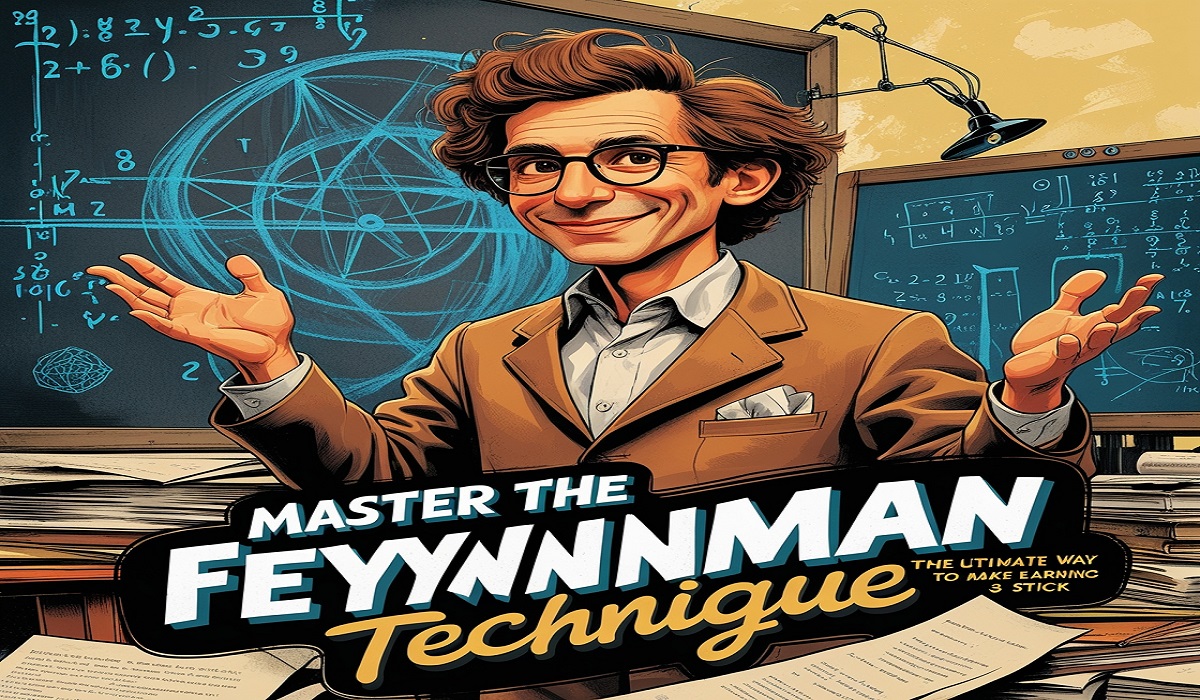The Ultimate Way to Make Learning STICK
The Ultimate Way to Make Learning STICK: In today’s fast-paced world, learning efficiently is more important than ever. Whether you’re a student, educator, or lifelong learner, retaining information can be challenging. Enter the Feynman Technique—a powerful learning strategy developed by Nobel Prize-winning physicist Richard Feynman. This method simplifies complex concepts, ensuring knowledge sticks for the long term.
In this comprehensive guide, we’ll explore:
- What the Feynman Technique is
- How to apply it step-by-step
- Why it’s effective for learning and teaching
- Real-world examples and success stories
- Tips to maximize its benefits
By the end, you’ll have a proven framework to master any subject faster and more effectively.
What is the Feynman Technique?
The Feynman Technique is a learning strategy designed to help individuals understand, retain, and recall information by breaking it down into simple terms. Named after Richard Feynman, a brilliant physicist known for his ability to explain complex ideas clearly, this method emphasizes teaching to learn.
Core Principles:
- Simplify: Explain concepts in plain language.
- Identify Gaps: Recognize what you don’t understand.
- Review & Refine: Strengthen weak points through repetition.
- Teach It: Solidify knowledge by explaining it to others.
This technique is not just for science—it works for any subject, from history to programming.
The 4-Step Process of the Feynman Technique
Step 1: Choose a Concept
Select a topic you want to master. Write it at the top of a blank page.
Step 2: Teach It to a Child
Explain the concept as if you were teaching a 6-year-old. Avoid jargon—use simple words.
Step 3: Identify Gaps & Go Back to the Source
If you struggle to explain something, revisit your study materials. Fill in the missing pieces.
Step 4: Simplify & Use Analogies
Refine your explanation until it’s crystal clear. Use analogies and examples to reinforce understanding.
Why the Feynman Technique Works?
- Forces Deep Understanding: You can’t fake knowledge when teaching simply.
- Improves Retention: Active recall strengthens memory.
- Exposes Weaknesses: Highlights what you don’t know.
- Builds Confidence: Mastering fundamentals makes advanced topics easier.
Applying the Feynman Technique in Education
Teachers and students can use this method to:
- Enhance lesson plans
- Improve exam preparation
- Boost critical thinking
Classroom Strategies:
- Peer Teaching: Students explain topics to each other.
- Concept Mapping: Visualize ideas in simple terms.
- Q&A Sessions: Encourage questioning to uncover gaps.
Real-World Examples of the Feynman Technique
- Medical Students: Simplify complex anatomy concepts.
- Programmers: Break down algorithms into plain English.
- Business Professionals: Explain financial models clearly.
Common Mistakes & How to Avoid Them
❌ Using Complex Language → Keep explanations simple.
❌ Skipping the Teaching Step → Always verbalize or write your explanation.
❌ Not Reviewing Gaps → Revisit unclear areas immediately.
Advanced Tips to Supercharge Learning
✔ Use Analogies (e.g., “The heart is like a pump”)
✔ Record Yourself Teaching (Listen for clarity)
✔ Test Yourself Regularly (Active recall beats passive reading)
Feynman Technique vs. Other Learning Methods
| Method | Pros | Cons |
|---|---|---|
| Feynman Technique | Deep understanding, retention | Requires effort |
| Rote Memorization | Quick recall | Easily forgotten |
| Spaced Repetition | Long-term retention | Less conceptual |
FAQs About the Feynman Technique
Q1: Can the Feynman Technique be used for math?
Yes! Breaking down formulas into simple steps makes math easier.
Q2: How long does it take to see results?
Immediately! Even one session improves clarity.
Q3: Is this only for students?
No! Professionals, teachers, and self-learners benefit.
Q4: What if I can’t simplify a concept?
Research more—sometimes, you need a different explanation.
Q5: Can I use this for group study?
Absolutely! Teaching peers reinforces learning.
Conclusion: Make Learning Stick Forever
The Feynman Technique is a game-changer for learners and educators. By simplifying, teaching, and refining, you master any subject faster.
